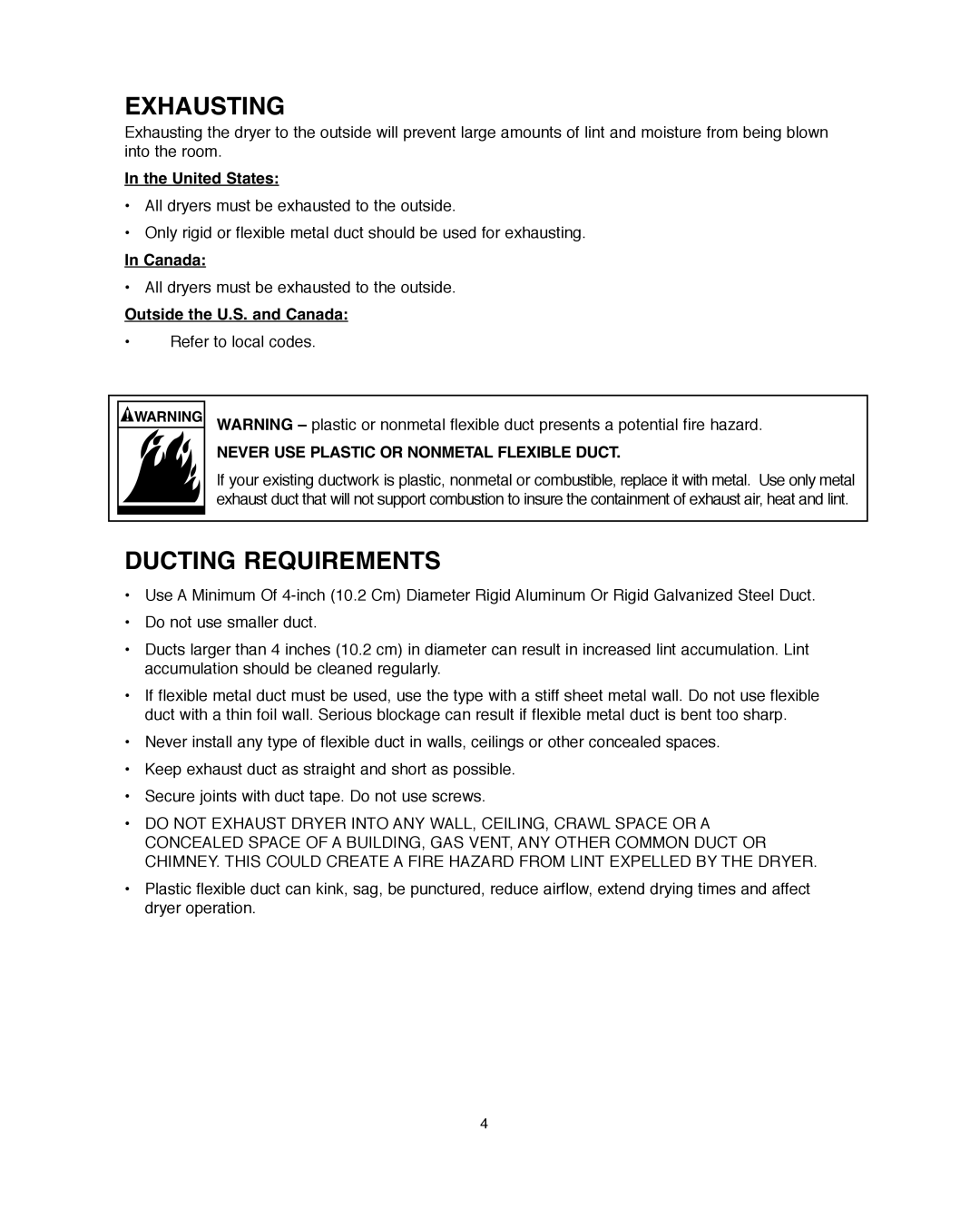
EXHAUSTING
Exhausting the dryer to the outside will prevent large amounts of lint and moisture from being blown into the room.
In the United States:
•All dryers must be exhausted to the outside.
•Only rigid or flexible metal duct should be used for exhausting.
In Canada:
• All dryers must be exhausted to the outside.
Outside the U.S. and Canada:
•Refer to local codes.
!WARNING
WARNING – plastic or nonmetal flexible duct presents a potential fire hazard.
NEVER USE PLASTIC OR NONMETAL FLEXIBLE DUCT.
If your existing ductwork is plastic, nonmetal or combustible, replace it with metal. Use only metal exhaust duct that will not support combustion to insure the containment of exhaust air, heat and lint.
DUCTING REQUIREMENTS
•Use A Minimum Of
•Do not use smaller duct.
•Ducts larger than 4 inches (10.2 cm) in diameter can result in increased lint accumulation. Lint accumulation should be cleaned regularly.
•If flexible metal duct must be used, use the type with a stiff sheet metal wall. Do not use flexible duct with a thin foil wall. Serious blockage can result if flexible metal duct is bent too sharp.
•Never install any type of flexible duct in walls, ceilings or other concealed spaces.
•Keep exhaust duct as straight and short as possible.
•Secure joints with duct tape. Do not use screws.
•DO NOT EXHAUST DRYER INTO ANY WALL, CEILING, CRAWL SPACE OR A CONCEALED SPACE OF A BUILDING, GAS VENT, ANY OTHER COMMON DUCT OR CHIMNEY. THIS COULD CREATE A FIRE HAZARD FROM LINT EXPELLED BY THE DRYER.
•Plastic flexible duct can kink, sag, be punctured, reduce airflow, extend drying times and affect dryer operation.
4
